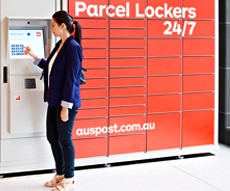B2C parcel deliveries are set to grow strongly in Australia in the next five years as consumersswitch to buying more goods online or through mobile devices, although e-commerce growth rates will
slow as the market matures, according to new research.The forecasts are reflected by the current strategic moves of the country’s leading parceldelivery companies, including Australia Post, Toll Group, TNT Express and Fastway Couriers, toexpand their B2C capabilities with new services and delivery options such as pick-up points andparcel lockers.
More than three-quarters of Australia’s internet users will buy items via online and mobilechannels this year, according to a new report from US-based researchers eMarketer, “Australia B2CEcommerce: Multichannel Shoppers Drive Retail Trends.” The number of digital buyers in Australia,with a population of 22 million, will steadily rise from 10.8 million last year to 11.2 millionthis year and 12.5 million by 2017, the report predicted.
Australians will also spend more on more goods and services from e-retailers, eMarketer said.However, the double-digit growth in B2C e-commerce sales seen in recent years will slow tomid-single-digit growth rates as the market matures, the organisation predicted.
From sales of A$25 billion in 2012, eMarketer estimates that B2C e-commerce sales in Australiawill grow at a 6.1% compound annual growth rate (CAGR) between 2011 and 2017, reaching A$32.56billion by 2017.
Travel, which is the dominant category for online purchases with about 25% of the market, willgradually lose market share as other categories of goods and services increase their sales, thereport pointed out. According to Roy Morgan Research, online sales of electronic products generatedA$3.35 billion in the year ending March 2013, while fashion products totalled A$2.65 billion.
As in many countries around the world, mobile usage will play a key role in the evolution ofboth offline and digital commerce in Australia. The number of smartphone users will rise from 30%of the population in 2011 to 54% this year and nearly 70% by 2017, according to the report.
As a result of this growth, m-commerce sales already skyrocketed from A$160 million in 2010 toA$5.6 billion last year, according to Nielsen and PayPal. This figure would mean about 30% of alldigital sales were made via a mobile device, which is far higher than in the US or the UK, forexample, eMarketer pointed out.
The evolution of multichannel retailing will also have a distinct influence on Australiane-commerce. Many retailers are working to leverage mobile devices to cater to consumers who shopvia digital channels but prefer to make purchases in person, the report said.
Additionally, Australia’s geographical location typically had kept its local brick-and-mortarretailers well protected from international competition, with the e-commerce market dominated byonline-only startups. More recently, however, the market has become much more competitive, withinternational stalwarts like Amazon.com, eBay and UK-based fashion retailer ASOS establishing astrong presence.
“Local retailers have been forced to act quickly to improve their own e-commerce standards tostave off the international competition, and what was an average online experience a few years agois now a very good experience,” commented Grant Arnott, publisher of Power Retail, an online retailindustry trade publication.












